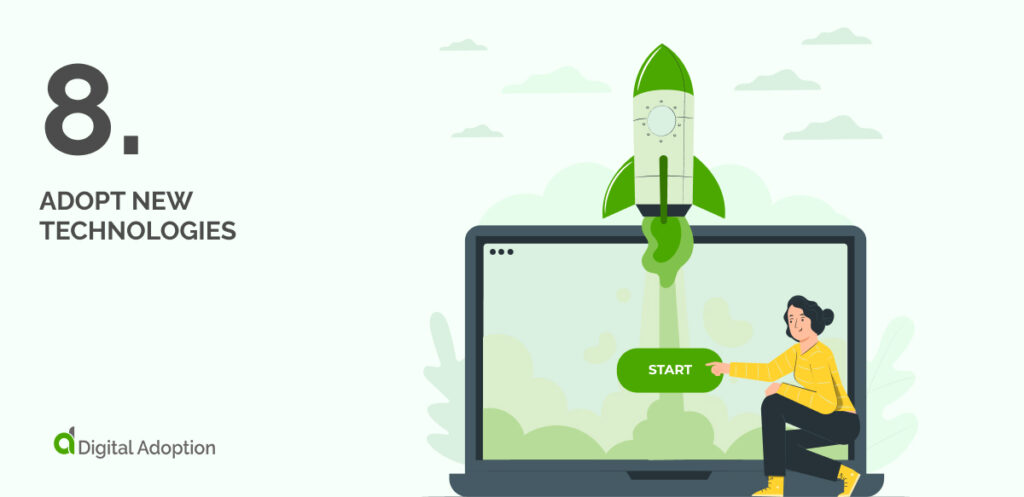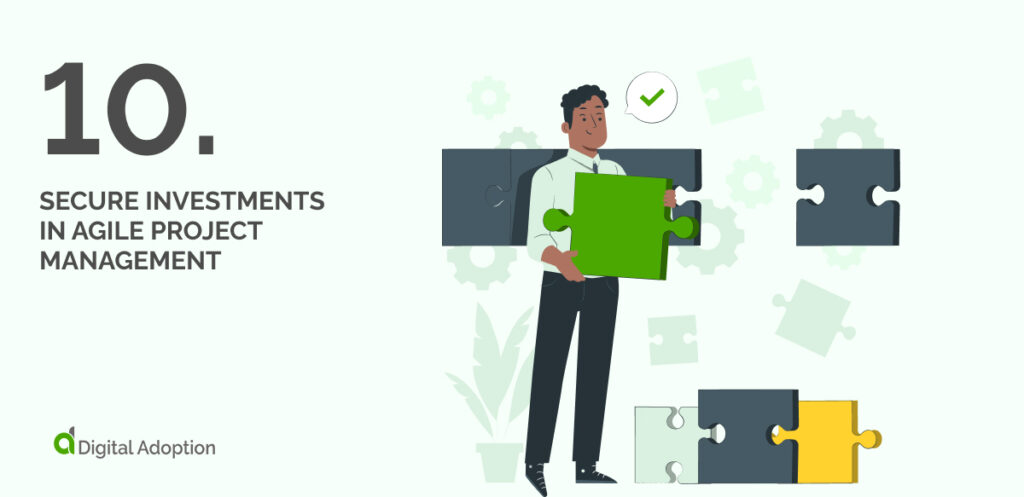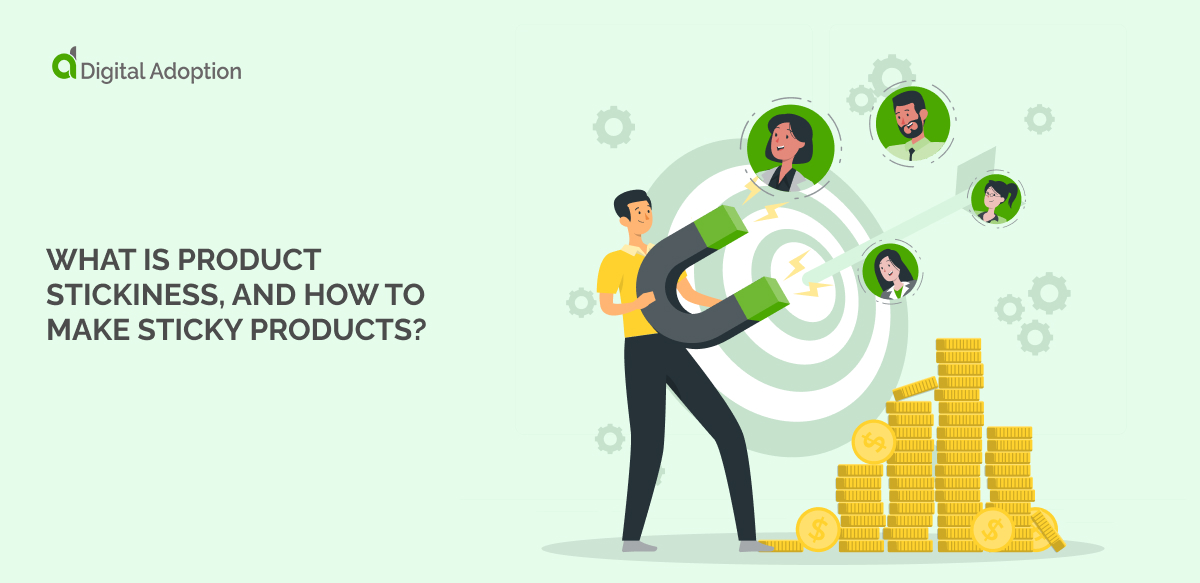Stop! Despite the temptation to rush out and fill your shopping cart with increasingly dazzling digital technologies, doing so without a plan is far too risky. Tap into your sensible side with a digital transformation roadmap: the best way to secure a consistent ROI.
It will allow you to take a step back to consider what additions to your tech stack you need and why, make your finances go as far as possible, and ensure your organization avoids the painful effects of buyer’s remorse.
To guide you on your path and help you avoid risk, this article will help you deploy the best digital transformation roadmap yet in 2023 via the following topics:
- What is a digital transformation roadmap?
- Why does a digital transformation roadmap matter?
- What are the phases of a digital transformation roadmap?
But before we get into these other aspects of the roadmap, let’s begin with a definition.
What Is A Digital Transformation Roadmap?
A digital transformation roadmap is a plan for a trip to your successful transformation. You need it to figure out how to navigate your digital transformation journey safely and successfully. It helps you figure out how to move from where you are now (Point A: before your transformation) to where you want to be (Point B: after your transformation). It also reminds you when to take road trip breaks and reflect on progress, reviewing and adjusting your route to success as you travel.
Now we have learned what a digital transformation roadmap is, let’s look at why it matters.
Why Does A Digital Transformation Roadmap Matter?

A digital transformation roadmap matters to your business because it helps you to guide the success of your digital transformation in a structured way. Doing so is essential, as our Digital Adoption Trend Report 2023 shows that spending on digital transformation and software was USD 104 million for larger enterprises. However, in that same year, only 41% of enterprises met their digital project KPIs. These statistics create the backdrop for why roadmaps are essential for helping you to:
- Reduce financial risk.
- Improve decision-making.
- Outstrip the competition.
- Improve customer experience transformations.
- Reduce staff frustration to optimize employee retention.
- Optimize business process efficiency to reach ROI faster.
Being aware that a transformation roadmap matters will help you focus on the critical elements of the roadmap, maintaining team motivation and ensuring organizational success.
Now we have looked at why digital transformation roadmaps matter, let’s move on to the ten phases of the roadmap.
What Are The Ten Phases Of A Digital Transformation Roadmap?
It is vital to follow the phases of your digital transformation roadmap to ensure success, as in 2022, large enterprises wasted USD 26 million on failed digital initiatives. The first step to avoiding waste is to secure buy-in.
1. Secure Buy-In from the CEO and Leadership

It is critical to ensure the digital transformation roadmap harmonizes with the vision of the CEO and leadership team from its very inception. Leadership buy-in also supports team members in the transformation as leaders provide a clear vision for what the team can achieve.
Continuous interaction with stakeholders and team members should be encouraged to obtain feedback that can help further refine your strategy. Avoid responding to criticism personally, but rather as a sign of conflicting views among different parties; work collaboratively towards finding an agreeable common ground.
2. Assess The Current Business State

Any significant voyage for digital transformations of any size begins by assessing your current business state. Consider responding to the following inquiries to get started:
- What are the gaps in your systems?
- Which current processes are successful?
- Where can you improve the success of these processes?
- What changes do you want to achieve with your digital transformation roadmap?
After analyzing your responses, you can easily create a few straightforward steps to bolster the performance of your digital transformation efforts. For example, SWOT analysis is a practical framework that reviews any business or project based on Strengths, Weaknesses, Opportunities, and Threats.
The SWOT method can help define your company’s digital capabilities in greater detail. Additionally, frameworks such as STEEP or STEEPLE are perfect guides for measuring internal and external factors.
The STEEP analysis allows companies to understand better their digital capabilities and the current state of their business. STEEP assesses political, social, economic, environmental, and technological factors, offering insights that surpass those provided through SWOT analysis.
The STEEPLE method takes the capabilities of STEEP and further explores legal and ethical factors that can potentially create issues with compliance. By incorporating this into a digital transformation plan, it is possible to upgrade an organization’s technology and improve its culture in tandem.
3. Establish Achievable Goals

Establishing objectives is a pivotal component in making returns on investment in all digital strategies.
Rather than treating them as endpoints, consider your goals and objectives for digital transformation as milestones along an ongoing journey. There is a prevalent misconception that such change happens when it’s a continual process driven by customer requirements.
A phased approach will assist you in identifying your goals and breaking down the roadmap into achievable pieces that are more manageable for everyone on your team. This method of incremental change can help make digital transformation less intimidating and much simpler to conquer.
4. Build A High-Caliber Launch Team

Human-centered design, which places humans and the value they bring at its core, has quickly become one of the essential UX (user experience) approaches due to its ability to generate a devoted and enthusiastic customer base. Therefore, any launch team must employ designers who consider their customers’ needs. Many businesses even purchase agencies specializing in this approach to guarantee success.
CIOs and CFOs typically spearhead a digital transformation strategy, but to ensure the success of high-impact digital initiatives, data scientists and scrum masters are equally important. Plus, for you to make any progress, developers must deploy the established roadmap. This methodology is crucial as it’s not about replacing existing processes with something new – instead, it attempts to incorporate existing and new processes to create greater efficiency than ever before.
5. Prioritize High-Success Initiatives

Initiating the transformation journey with manageable, swift-to-implement, and economic projects is an excellent practice. It’s simple economics: emphasizing lighthouse projects initially secures quicker Return on Investment (ROI) and an affirmative reinforcement cycle. In other words, start small in the short term but think big for the long term for all digital transformation initiatives.
6. Foster A Pro-Change Culture

For any changes to be successful, ensure that everyone is entirely on board. If you involve team members from the beginning, they will recognize the value of adopting new digital initiatives and technologies.
Demonstrate how these state-of-the-art systems can make their labor easier while minimizing aggravation. When your staff asks questions about modern digital technology and procedures, answer them in detail before problems become too large to overcome.
Invest in innovative technologies that can contribute to the success of your organization and automate mundane tasks. To attain remarkable results, provide teams with the necessary cutting-edge tools, from AI-powered applications to cloud computing platforms that safely store and secure data.
7. Invest In The Best Software Tools

We have compiled a comprehensive list of available tools to assist teams with different transformation processes. These tools can help you to streamline and optimize the process from start to finish!
- Embedding DAPs (digital adoption platforms) with contextual direction can help users reduce onboarding process time and guide them through fundamental processes. Doing so can rapidly increase proficiency and provide helpful feedback details while they navigate the product.
- Gathering feedback through specialized tools can promote idea sharing and provide valuable data to guide your transformation.
- Training materials can help employees expand their knowledge and skills as they progress.
- Team members can use digital bullet journals to observe their progress and accomplishments during the transformation process.
- Employee communication channels create an environment where employees can query, exchange advice, or receive news about their transformation process. These channels provide the perfect platform, whether it be Slack, MS Teams, or Trello boards.
8. Adopt New Technologies

Organizations must meet customer expectations quickly and efficiently to stay competitive in this digital age. The rewards for doing so are huge – ranging from creating unique services or products to accessing brand-new markets.
9. Set A High Pace Of Transformation

The initial months of your transformation journey are often the most important and have a significant bearing on the entire process. Digital transformation KPIs and metrics can help you measure the rate of progress to ensure you achieve ROI on schedule.
10. Secure Investments In Agile Project Management

Place your end-user on a pedestal. After all, their reactions to the goods or services provided by your business matter most of all. By crafting each digital initiative to improve their experience in mind, you are sure to exceed expectations and deliver an effective solution to ensure optimized use of your digital technology.
Begin Your Digital Transformation Roadmap Journey Today
With successful digital transformation projects more critical now than ever, there is no better time to start working on your roadmap as you begin reimagining digital transformation in 2023. So make your transformation dream a digital reality by starting your roadmap journey today!
Create an action plan with precise timelines so that you can progress toward meeting the goals in your Digital Transformation Roadmap. Taking these steps today will ensure that you’re one step ahead of the competition throughout 2023.













